THE MAN ON THE SHROUD A FORENSIC INQUIRY
BY DR. PETRUS SOONS
This is the text of the POWER POINT presentation: THE MAN ON THE SHROUD, A FORENSIC INQUIRY by Dr. Petrus SOONS
1) GETHSEMANE
The severe mental anxiety due to a profound fear of His prescient sufferings stimulated the fear center of the brain (amygdale), which sent out a general alarm to all centers of the brain, invoking a full-scale fight-or-flight reaction. (The sympathetic division of the nervous system is activated and adrenaline-like chemicals like catecholamines are produced)
This reaction lasted a long time, resulting in a STATE OF EXHAUSTION, only to end abruptly with a severe counterreaction after the angel ministered to Him and He accepted his fate. (Parasympathetic division of the nervous system is activated)
The HAEMATIDROSIS (sweating of blood), illustrates the severity of Jesus’ mental suffering, an area that is not generally recognized when contemplating His sufferings. The effects of the haematidrosis, and the severe anxiety associated with it are:
1) General weakness
2) Depression
3) Mild to moderate dehydration
4) Mild hypovolemia due to sweat and blood loss
This would have weakened Jesus prior to His crucifixion.
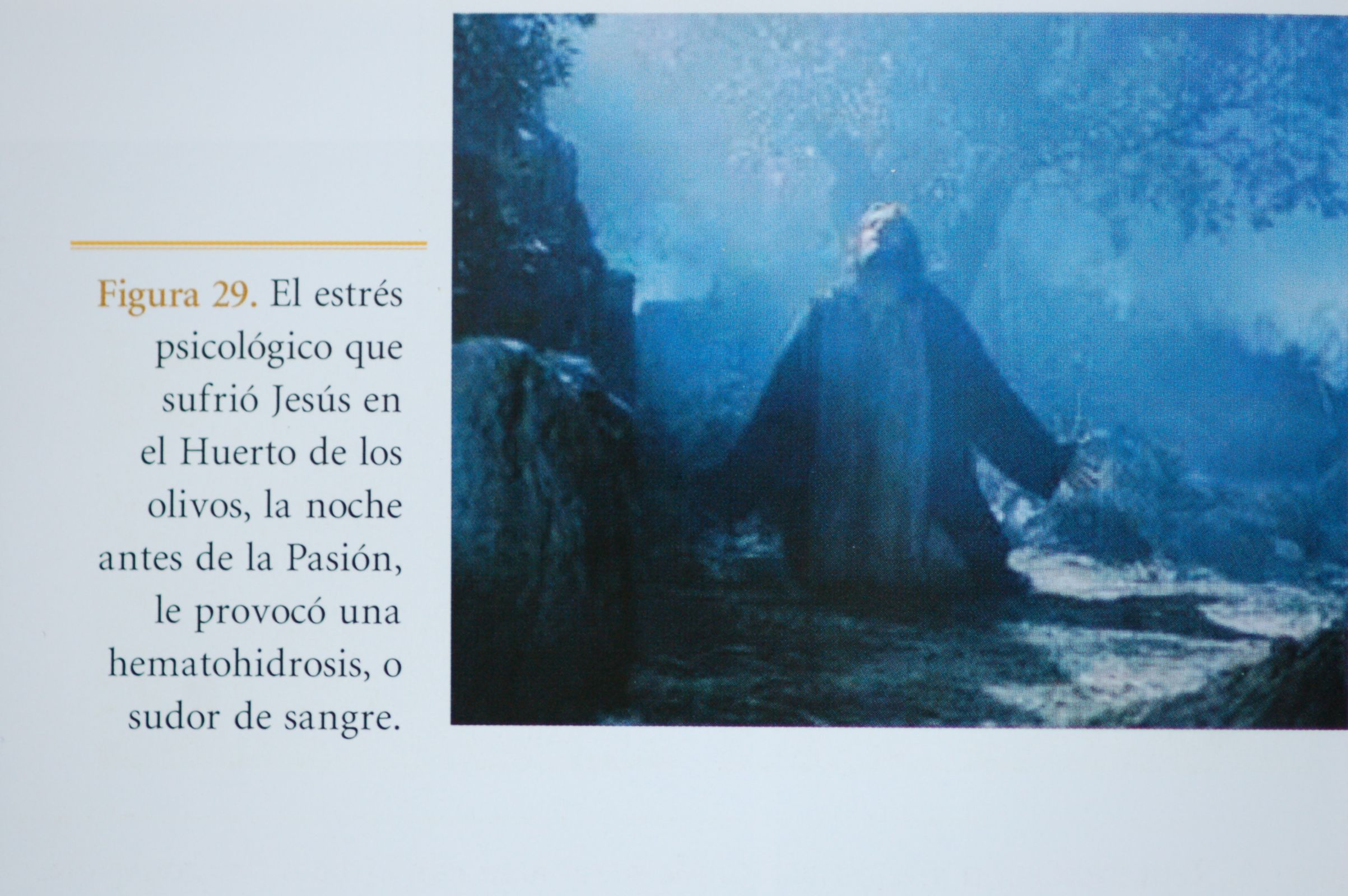
Photo 1. Gethsemane
2) ARREST AND IMPRISONEMENT IN THE HOUSE OF THE HIGH PRIEST
Jesus was arrested and bound in the Garden of Gethsemane and then led across the Kidron Valley to the home of Caiphas the High Priest before He was to appear before the Sanhedrin early in the morning. Following a preliminary interrogation by Annas, father-in-law and ex-High Priest, He was interrogated by Caiphas and was beaten in the face by one of the servants. Then He was taken to a holding area where, according to the Evangelist Luke, the men who were holding Jesus mocked Him and beat Him.
“Prophesy, who is it that struck You?”. And they spoke other words against Him (Luke 22: 63-65).
The extent of these beatings and the trek across the Kidron Valley would certainly have contributed to Jesus’s physical condition, which was already weakened by the haematidrosis and acute anxiety in the Garden of Ghetsemane. He was also deprived of sleep and food or drinks, when a few hours later he was brought before the Sanhedrin (in the Temple), the highest religious body of the land, presided over by Caiphas the High Priest.
The Sanhedrin quickly condemned Jesus to death without regard to witnesses because they considered His claim of being the Messiah as blasphemy.
Then they led Jesus from the Sanhedrin to the Hall of Judgement to appear before Pilate, the Roman Governor. Pilate insisted that Jesus was not guilty of any crime against the Roman Law and ordered the scourging to appease the chief priests and the rulers of the Jewish people, assuming that seeing Jesus in such a wretched state, (Ecce Homo) it would satisfy their punitive desires.
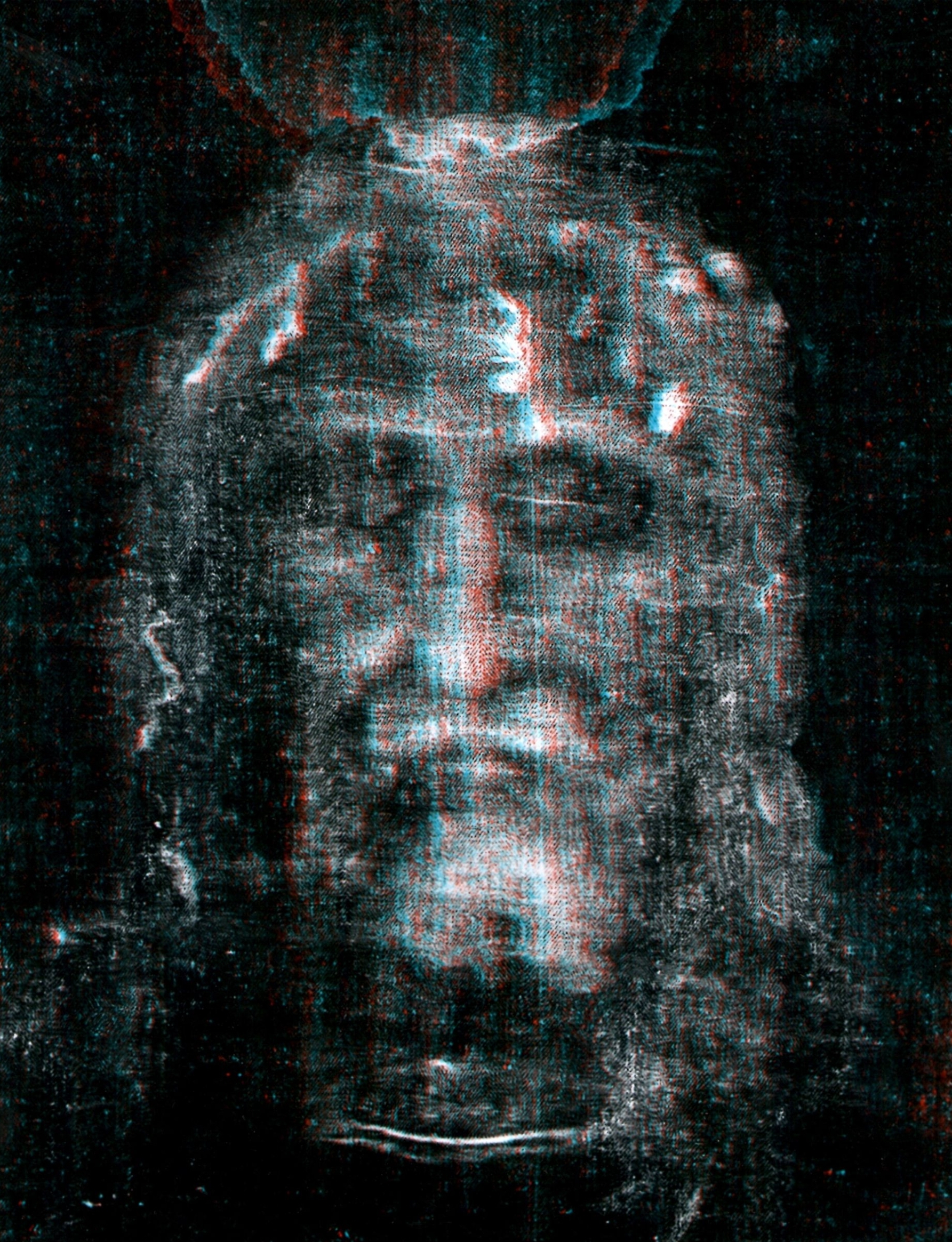
Photo 2. Face with swellings. ANAGLYPH (USE 3D GLASSES)
3) THE SCOURGING FORENSIC RECONSTRUCTION
After the scourging Jesus’ condition was relatively serious. He was in the early stages of traumatic or injury shock due to the injuries caused by the brutal scourging (particularly to the chest wall and lungs) and to a lesser degree by the beating at the home of Caiphas. In addition, hypovolemic (low blood volume) shock was developing, due to slow pleural effusion, hematidrosis, small hemorrhagic losses due to the scourging, vomiting and extreme sweating. It is important to note that later, when Joseph of Arimatea requested Jesus’ body for burial, Pilate expressed surprise that Jesus had died so soon on the cross. (Mark 15:44-45). However, Jesus’ early demise can be readily explained if we place the facts in proper perspective. Jesus’ scourging was particularly brutal, and there is little doubt that the intensity of this brutal treatment was the major factor accounting for His early demise.
This early stage of hypovolemia (circulating fluid loss) after the scourging and the resulting hypovolemic shock would cause, weakness, light-headedness, ashen color, and intermittent episodes of profuse sweating. It is also important to note, that the brutal beating to the chest wall would have impacted the lungs and cause fluid build-up around the lungs. The fluid, admixed with blood, would have developed slowly over a few hours following the chest injuries, adding further to the fluid losses and causing difficulty in breathing and severe pain. The term traumatic wet lungs, refers to the accumulation of blood, fluids and mucus from severe trauma to the chest.
The bent position of the victims of the scourging would also expose the lower part of the kidneys, and also the liver to the scourging, probably resulting in hemorrhagias (bleedings) in these organs also. It is important to note, that there are not many scourge wounds visible over the left frontal thorax. (heart region). The Roman soldiers, being experts in this process, obviously knew they had to avoid that area, or the victim could die of an accumulation of blood in the pericardial area, between the heart and the heart sac.
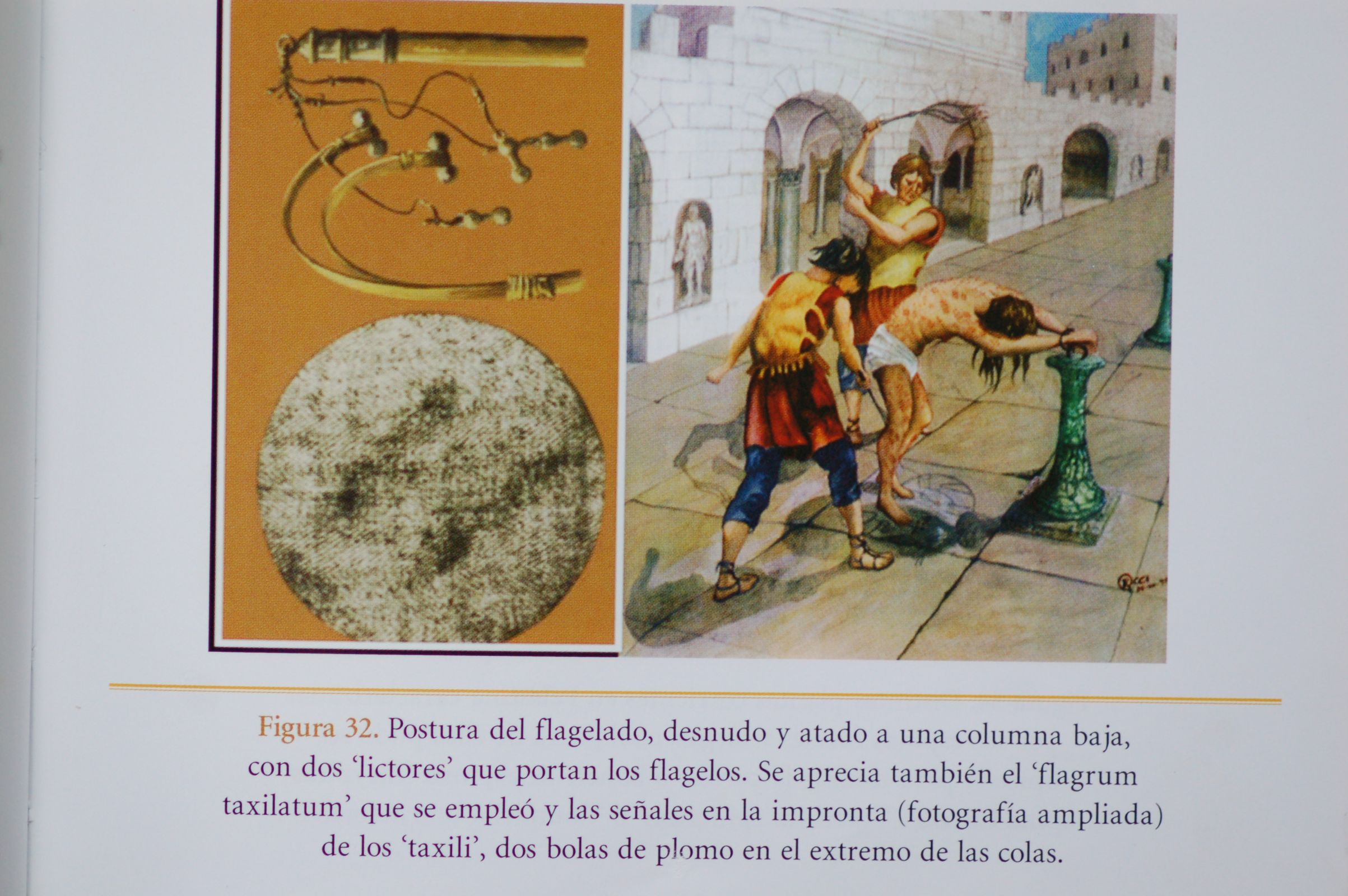
Photo 3. Scourge wounds
4) THE CROWNING OF JESUS FORENSIC RECONSTRUCTION
When the Roman soldiers mocked Jesus after the scourging, putting a purple mantle and giving Him a reed, they also made a “HELMET OF THORNS” and put this on His head and beating the crown of thorns with the reed in order to let the thorns penetrate deeper in the skin. This would cause a penetration of the nerves also and would cause severe pains of a Trigeminus Neuralgy (sever nerve pains in head and face) and all this was adding to the trauma already received from the brutal scourging and the beating at the house of Caiphas, thereby deepening the degree of traumatic shock. Concomitantly, the blood loss and sweating from the hematidrosis, the increased sweating during the trigeminal neuralgia attacks, the blood loss from the penetration by the thorns, and the sweating and vomiting caused by the flogging, all added to the degree of hypovolemic shock. At this time, there would be significant fluid build-up around His lungs (pleural effusion), which was slowly developing due to the severe beating to the chest during the flogging. At this stage, Jesus would be progressively weaker, light-headed, ashen in color, somewhat short of breath, and unsteady on His feet, and He would experience intermittent episodes of sweating.
5) VIA CRUCIS THE ROAD TO CALVARY
Jesus had already been in a stage of marked weakness, fatigue, and intense pain, prior to His trek to Calvary in the blazing sun. When Jesus reached Calvary, He would have been extremely exhausted to the point of fainting and having difficulty keeping His balance. It is safe to assume that Jesus was in a moderate state of traumatic and hypovolemic shock at His arrival at Calvary. His shoulders were traumatized from carrying the patibulum (horizontal beam of the cross) and falling several times. The degree of traumatic and hypovolemic shock, resulting from the beatings, the brutal scourging at the praetorium, and the nerve-racking, lancinating pains from the crown of thorns, were compounded further by the multiple falls with the patibulum on His shoulders.
Moreover, there is a strong possibility that at least one of His lungs was collapsed and filling with blood due to the brutal scourging. The hypovolemic shock became progressively worse from dehydration due to the slow continuous accumulation of the fluids around His lungs and the excessive sweating. He still had intermittent episodes of the trigeminal neuralgy further adding to the degree of traumatic shock.
Forensically spoken, it is already extraordinary that Jesus was able to make the trek to Calvary at all, in the condition that He was in. Here he was, Jesus of Nazareth, King of the Jews, lying naked on the ground in a state of utter exhaustion, His body racked with pain, and still to face the most horrible of sufferings, the terrifying crucifixion.
6) NAILING AND CRUCIFIXION OF JESUS
Jesus was in a state of early traumatic and hypovolemic shock at His arrival at Golgotha. The brutal pains of the nailing of His hands and feet added to the unrelenting pains from the neuralgia (nerve pain) of the median (hand nerve) and plantar (feet) nerves, where the nails had penetrated and damaged the nerves. The severe trauma to the chest wall, the lung trauma and highly probable pneumothorax (collapsed lung) and lung hemorrhages (bleedings) from the brutal scourging, the pains of the trigeminus (face and head nerve) neuralgy, and the increased fluid loss from the pleural effusion (accumulation of fluids around the lungs). The profuse sweating and blood losses together would have augmented His degree of shock, causing a further increase in His light-headedness and shortness of breath. His heartbeat would be rapid, and His heart would be pounding against His chest in an attempt to compensate for the fluid losses and the degree of shock. The pain would also be accentuated because of Jesus’ utter fatigue.
Monheim writes: “Of significant importance to the patient’s pain threshold is fatigue. It has definitely been proven, that patients who are rested and have had a good night’s sleep previous to an unpleasant experience will have a much higher pain-reaction threshold than an individual who is tired and worn”.
As we know, Jesus was up most of the night after His mental agony in the Garden of Gethsemane and suffered a series of traumatic episodes. Following these insults, He was in a severely exhausted condition, experiencing horrible pains, and in a state of increasing shock. The pains would have been unrelenting and brutal, causing severe burning sensations all over the body. All of the known inciting factors were present to aggravate the condition, including movements of air, the direct sunrays, the heat, the pressure of the nails constantly rubbing against the nerves, and the movement of the body on the cross. This all would have magnified the pains.
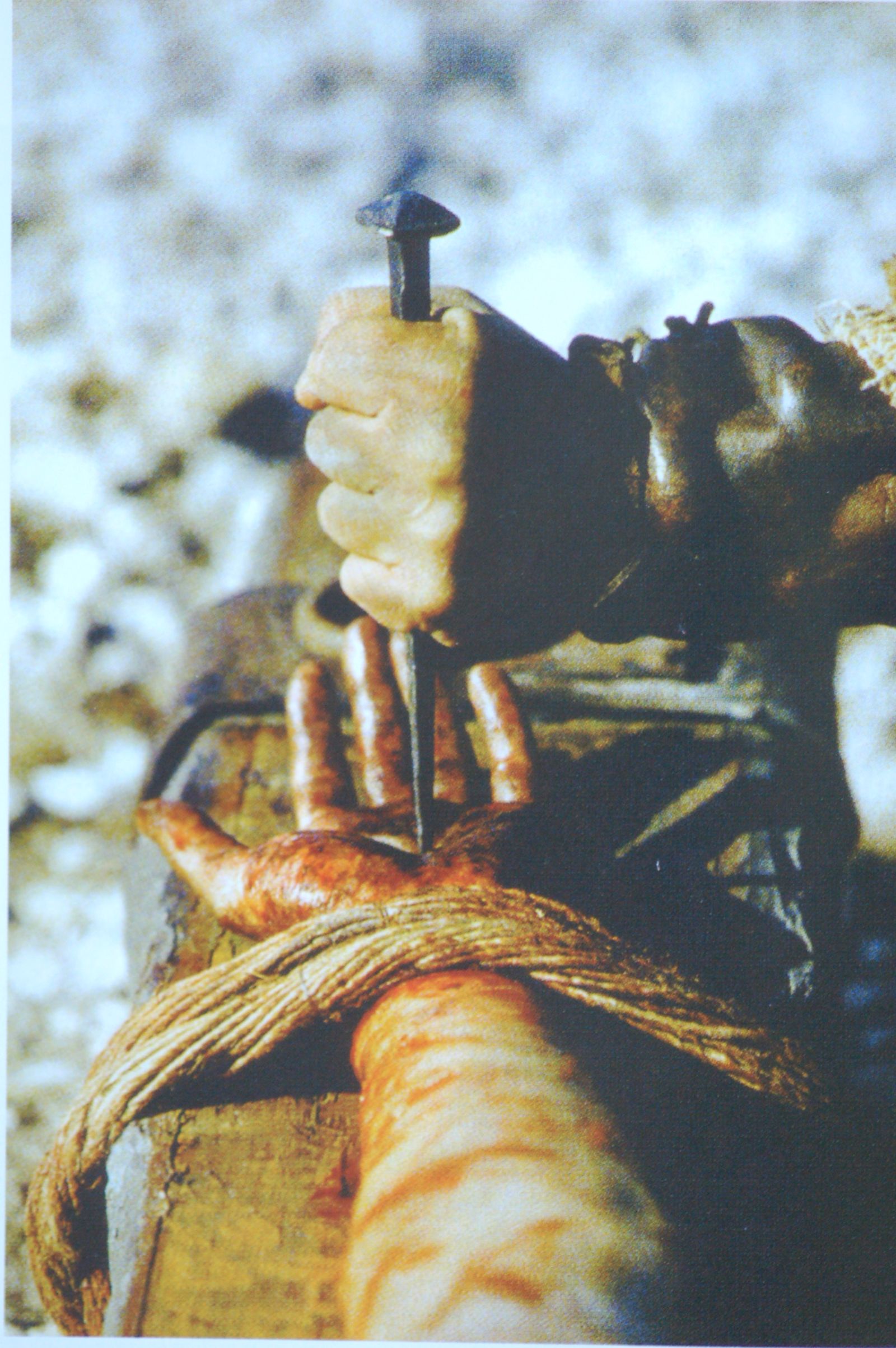
Photo 4. Nailing wrist
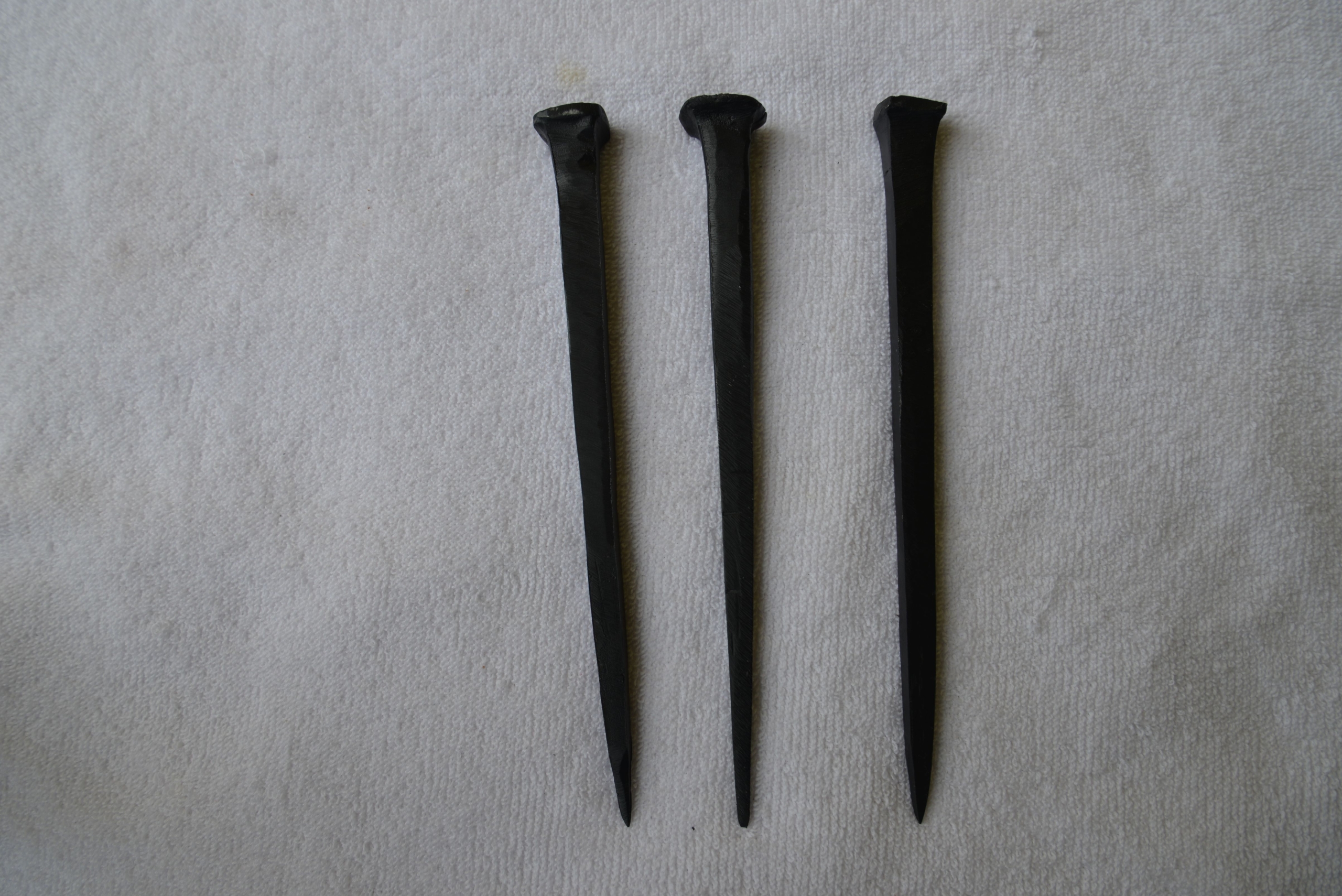
Photo 5. Nailing wrist
7) THE CAUSE OF DEATH OF JESUS
FREDERICK ZUGIBE, in his official capacity as Medical Examiner would have written the following death certificate:
“Cause of death: Cardiac and respiratory arrest, due to hypovolemic and traumatic shock
due to flagellation and crucifixion.
Mark 15:43-45: “Joseph of Arimathea, a respected member of the Sanhedrin, who was also himself looking for the Kingdom of God, took courage and went to Pilate and asked for the body of Jesus. And Pilate wondered if He were already dead and summoned the Centurion (from Golgotha), he asked him whether He was already dead. And when he learned from the centurion that He was dead, he granted the body of Jesus”.
Pilate seemed surprised that Jesus died so soon, and certainly this was based on his vast experience of the many crucifixions that he had ordered.
However, in my (Dr. Frederick Zugibe) professional opinion, the reason for Jesus apparent rapid demise unquestionably derives primarily from the extent of the brutal scourging, (which Pilate was responsible for in trying to appease the mob) and other injuries sustained during His journey from Gethsemane to Calvary. Jesus scourging was uncharacteristically brutal. Remember, Pilate could find no evidence that Jesus had committed any crime (according to Roman Law) and could not justify crucifying Him. He even sent Him to Herod who sent Him back to Pilate, and as a last-ditch effort, Pilate ordered the vicious scourging in an attempt to appease the mob. Jesus was severely flogged, causing extensive damage to the lungs, ribs, and body wall, thereby throwing Him into early shock manifested by extreme weakness, tremors, probable lung collapse, seizures and fainting. Add the mental anguish, and the crowning of thorns, the carrying of the crosspiece of the cross and the crucifixion process, and anyone with a background in forensic pathology or emergency medicine would cringe and wonder how He lasted as long as He did and certainly would not be in the least surprised that He died relatively quickly. Part of the suffering would have been also that He experienced constant cramps in the arms, legs, thighs, abdomen etc., in short, constant severe muscle spasms.
8) THE SPEAR AND THE TAKING OFF THE CROSS
The Roman execution squad consisted of an officer, a Centurion, called the exactor mortis, and four soldiers and was called a quaternion. They were professional soldiers and experts in crucifixions. The priests went to Pilate to tell him that he must get rid of the crucified victims before the sunset and the beginning of the Feast of Pascua according to Jewish law. So, Pilate gives permission to do so.
Two of the soldiers break the legs of the two victims on both sides of Jesus to hasten their death, because then they will not be able to lift themselves up and will die of asphyxiation in 15 till 20 minutes. When they come to Jesus, they see that he has died already, and they push a lance in His right thorax side in the Vth intercostal space between the 5th and 6th rib. By doing that they would have hit the right atrium of the heart, which is the only part of the heart that contains blood after death. According to the Evangelist John (who was an eyewitness of the event) “blood and water came out” when the soldier withdrew the lance (Roman Hasta). So, blood from the heart and water from the pleural effusion and the liquid around the lungs. The spear action would have also caused an immediate pneumothorax (collapsed lung) on the right side.
The question is, why did the Roman soldiers put the lance in His side when they concluded that He was already dead.
The answer to that question is that there was a Roman Law, that stated, that when a crucified person was condemned to death by crucifixion, and he would survive the ordeal, that then the whole execution squad would be crucified. So, to be hundred percent sure they put the spear in the heart.
The taking of the cross would have been done in the following manner. The soldiers would tap the point of the square nail, protruding through the back of the cross through the feet, while a member of the quaternion held the crucarius (the victim) around the waist. Two men would then lift the crosspiece out of the mortise and lay the cruciarius on his abdomen while they tapped the points of the two nails in the wrists to release them from the upright. Then the nails would be pulled out of the hands. The body would then be free and stiff in “RIGOR MORTIS”, because the muscle stiffness in a traumatic death sets in fast and can be completed in half an hour.
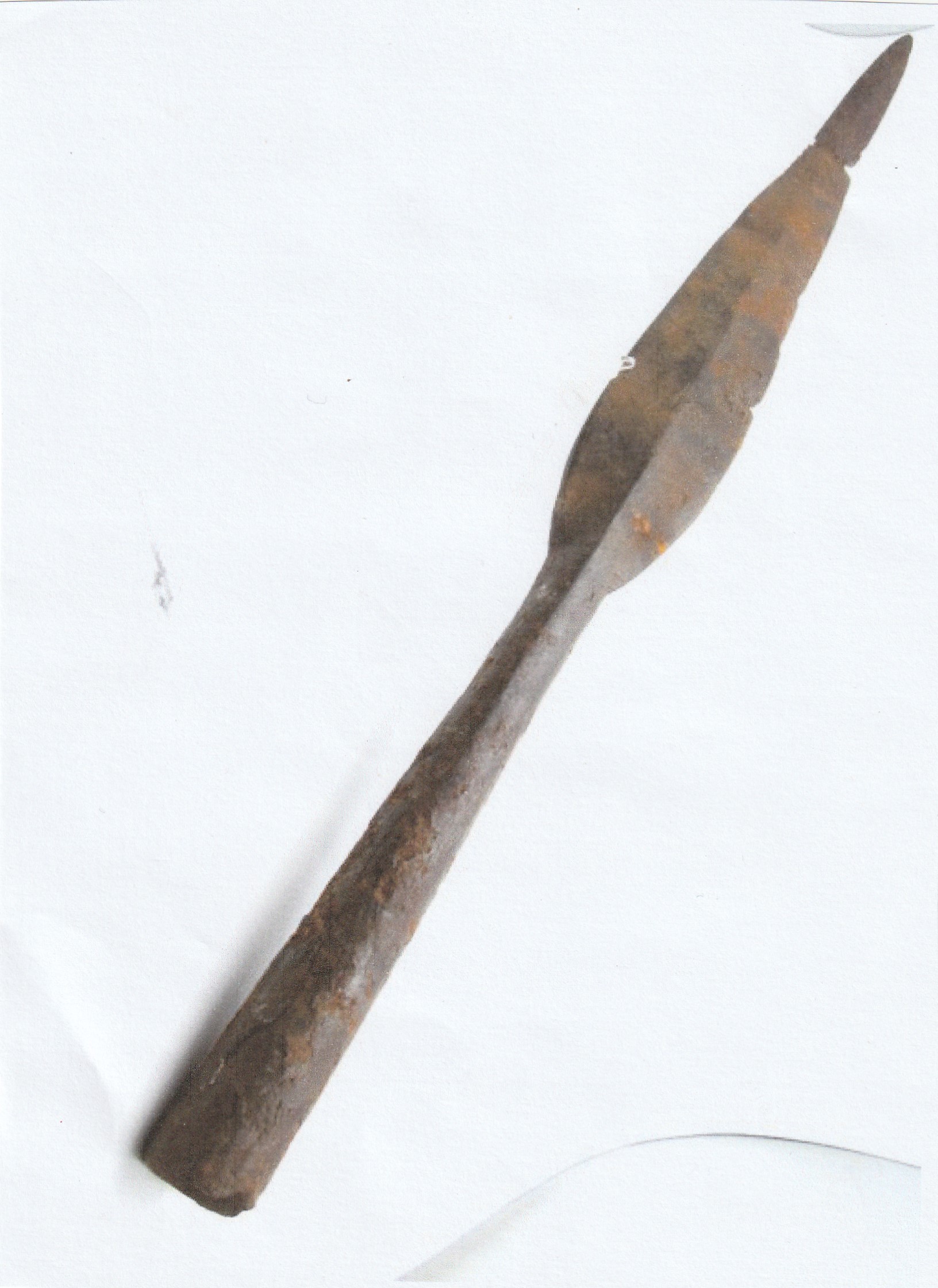
Photo 6. Lance wound
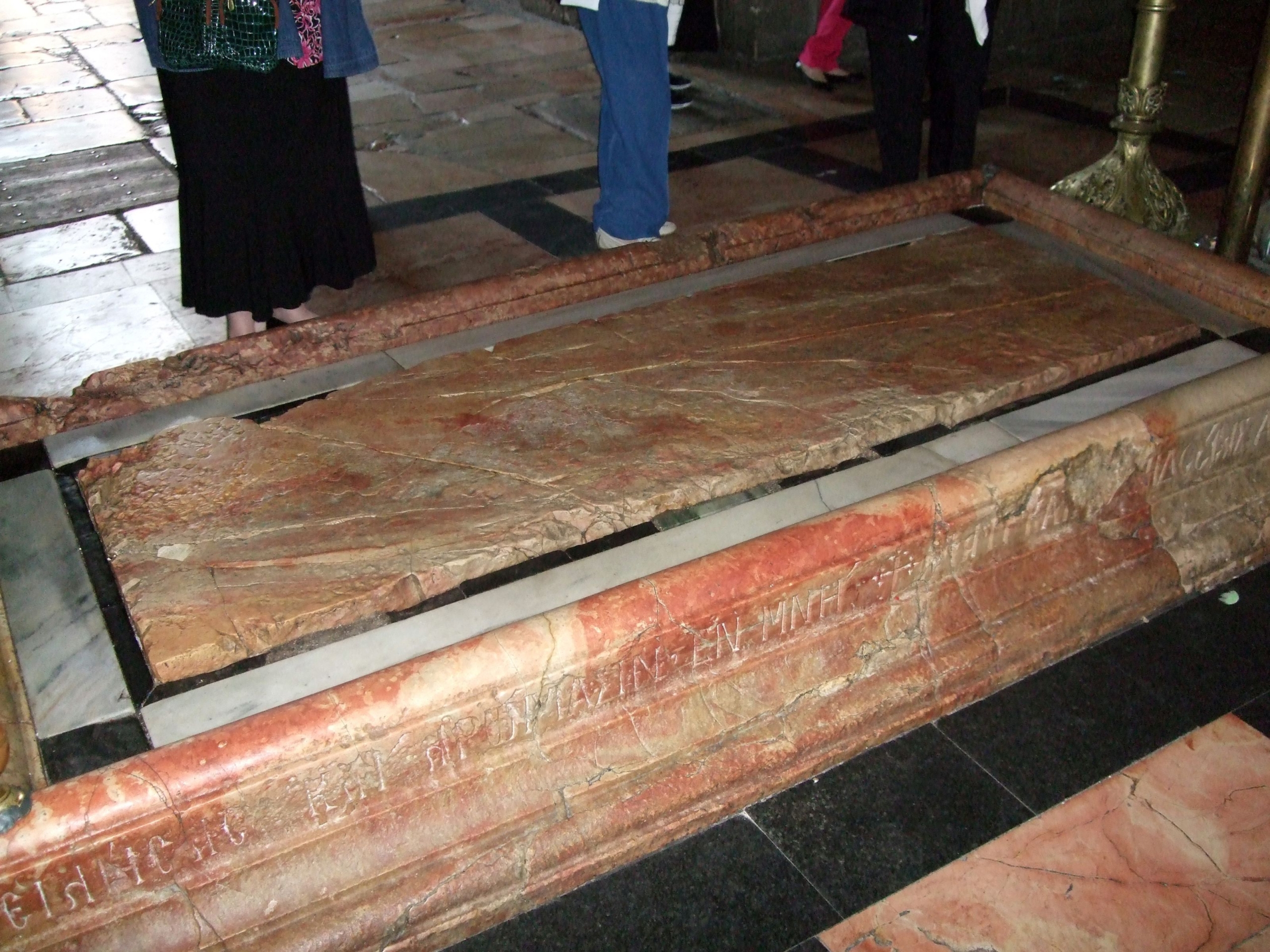
Photo 7. Stone slab used for washing body
9) WASHING THE BODY, SCRIPTURE AND JEWISH BURIAL CUSTOMS
John 19:40
“They took the body of Jesus and wrapped it with spices and in linen cloths following the JEWISH BURIAL CUSTOMS”.
John was the only eyewitness of all these events because the rest of the Apostles were in hiding. So, he witnessed the crucifixion and was probably involved in all the actions that took place till the placing of the body in the tomb. If he tells that everything was done in accordance with Jewish burial customs than this passage in his Gospel is completely straightforward and clear in its interpretation. Frederick Zugibe, the Forensic Specialist, mentions that a superficial washing of the body, accompanied by a shortened ritual can be accomplished in minutes, as he has personally observed this numerous times in the medical’s examiner office in cases involving the deaths of Orthodox Jews.
Although the major tenets of the law regarding burial customs at the time of Jesus were perhaps essentially the same as today, we do not know whether there are fine differences between the process practiced today and the ones practiced at the time of Jesus death.
The only fluid exuding out of the lance wound would have been from the initial penetrating by the lance followed by a quick jerking motion following the sudden thrust, and the remaining blood from the right atrium would have come out, followed by the liquid present in and around the lungs, or like John tells us, “blood and water came out”.
This amount is significantly less than the quarter log dictated as the minimum amount of blood after death required to become unclean according to the Mishna and Talmud.
All other blood on the body prior to washing would have been present prior to death and thus could have been washed according to the Jewish prescription. If a rapid burial ceremony was necessary, the washing ritual could have been done and the body washed within several minutes according to my (Zugibe) observations and in consultations with rabbinic scholars. The act of washing would then have caused an oozing from each of the wounds, thereby accounting for imprints consistent with those on the Shroud. The blood from these wounds could not have been subsequently washed because it would have been considered unclean blood. This scenario conforms to the requirements of Jewish law, accounts for the well-defined wounds depicted on the Shroud of Turin and provides a satisfactory explanation for the forensic pathologist.
The stone of unction is believed to be the stone on which Jesus was washed and anointed and is presently in the Church of the Holy Sepulcher in Jerusalem and has been recognized since the Byzantine Era.
10) RIGOR MORTIS AND THE TOMB
Rigor Mortis is derived from the Latin for “stiffness of death” and is stiffening and shortening of all the muscles of the body after death caused by an irreversible chemical reaction. Rigor mortis usually begins in the jaw, facial muscles, and neck about three hours after death and appears progressively in the muscles of the neck, then chest, wrist and ankles, knees and hips, becoming complete in about 18 to 36 hours. The rigor state will usually remain for about twelve hours and gradually go away, leaving the body in the same sequence in 12 or more hours. Rigor mortis is caused by a complex chemical reaction that is natural to the muscle fibers. The following is a simplified explanation of the process. Each muscle consists of microscopic myofibrils that are chemically made up of two types of thin and thick proteins called ACTIN and MYOSIN filaments. During muscle contractions these filaments interact with each other, causing sliding of a rod of actin between rods of myosin, almost like the effect of a piston within a cylinder. Actomyosin is formed, which is shorter in length than actin or myosin. A chemical of the body called adenosine triphosphate, or ATP, which supplies energy to the muscles, is converted after death to adenosine diphosphate (ADP), and rigor mortis ensues. This chemical reaction is modified by many factors. Production of heat such as occurs with fever, warm weather, or increased muscle activity stimulates the chemical reaction, causing more rapid rigor mortis, whereas cold retards it. After a serious trauma, rigor can set in within 20 minutes like happened with the body of Jesus after His death. If a person is in complete rigor mortis, the only way to change the position of a limb at a joint is to “break” the rigor, a term referring to the forcible bending of a limb at any joint. For example, if an elbow is in rigor mortis and bent to an angle of 45 degrees, straightening the arm is possible by forcibly straightening it. There is an indication that the Man on the Shroud was in a state of rigor mortis when placed on the Shroud, the absence of a neck space in the front image and an elongated image on the back of the neck area is highly suggestive that the head was bent forward in rigor. The leg and foot images are also highly suggestive of rigor mortis because the right calve shows a greater density than the left. The raised chest also suggests rigor. The left foot shows an imprint of only part of the heel, suggesting either a very slight bend at the left knee with the foot flexed slightly forward or a turning inward of the left foot over the right. If rigor were not present, there should have been symmetrical images of the legs. Therefore, the Man of the Shroud would have been fixed in attitude of suspension. Moreover, when He was taken down from the cross, in addition to breaking the rigor at the knees, the rigor had to be broken at the shoulder joint and slightly at the elbows in order to assume the position present on the Shroud.
11) ENTOMBMENT
After the preparations were ready, Jesus’s body was carried to the unused tomb of Joseph of Arimatea. This tomb is according to the distance measured in the Church of the Sepulcre, about 50 yards away from Golgotha.
The carrying of the body and the preparations for the burial would have been done probably by servants of Joseph of Arimatea and Nicodemus, who were both members of the Sanhedrin and well-known and rich citizens of Jerusalem. They themselves cold not touch the dead body because they would have been impure, unthinkable on the eve of Pascua, one of the most holy days in the Jewish calender.
The Gospels tell us that Jesus body was enshrouded, and the sudarium rolled up and put in a place by itself, so not anymore covering the head.
Nicodemus had bought a substantial amount of aloe and mirre so most probably the body was covered with these spices. Before putting the Shroud (othonia).
After having finished their work, the men would have rolled the round stone in front of the entrance, closing of the tomb and everybody hurried back to the city because the evening was falling and at sunset the new day would start and they had to finish all the work before this sunset.
THIS IS THE TEXT THAT BELONGS TO THE FOLLOWING POWERPOINT PRESENTATION WHICH IS CALLED:
“THE MAN ON THE SHROUD – FORENSIC INQUIRY”
BY DR. PETRUS SOONS M.D.
Click to see POWERPOINT PRESENTATION “THE MAN ON THE SHROUD – FORENSIC INQUIRY”
*To return close tab
